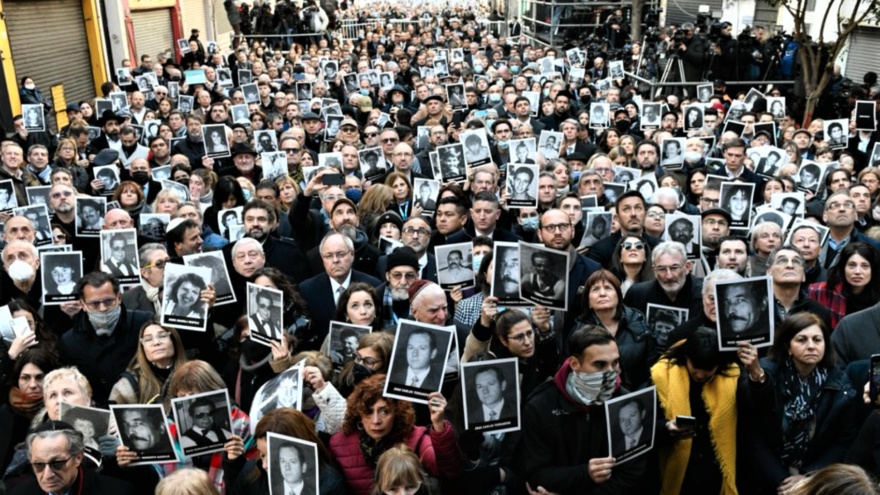An internal Mossad report suggests that Hezbollah, not Iran, was behind a series of major terror attacks on Jewish targets in Argentina in the 1990s, The New York Times revealed on Friday.
In 1992, a bombing at the Israeli Embassy in Buenos Aires killed 29 people. A bombing at the AMIA Jewish community center the same year killed 85 and left hundreds wounded.
The Mossad report contradicts what has been Israel’s official position on the attacks, as well as the prevailing claim in Argentina: that Hezbollah perpetrated the attacks at Iran’s behest.
The new conclusions could have ramifications in Buenos Aires, especially for the families of the victims, who for years have believed that their loved ones were killed on Tehran’s orders, and for the special unit formed to investigate the bombings, which was headed by former prosecutor Alberto Nisman. Nisman was assassinated in January 2015, four days after accusing then-President of Argentina Cristina Kirchner of manipulating the investigation to Iran’s benefit.
Associates of Israeli Prime Minister Yair Lapid said that in their opinion, the report—which the Times did not publish in full—did indicate that there had been Iranian involvement in the attacks.
An official in the Argentine Jewish community told Israel Hayom that he thought it was “impossible” that Iran had not been involved in the attacks.
“It appears more like propaganda from the New York Times to help Iran come out clean and pave the way to a nuclear deal,” the official said.
Louis Sizevsky, who lost his daughter, Paula, in one of the bombings, said, “The article clearly says that Iran approved, funded and provided supplies and training to Hezbollah, who carried out the attack, and that’s what the indictment says.
“Why don’t they note the movement by Iranian diplomats, who were entering and leaving Argentina in the days prior to the attack, which has been legally proven? It looks like Iran helped Hezbollah carry out the attack.”
Sizevsky also expressed doubt that the explosives used had been smuggled in shampoo bottles and chocolates boxes, as reported. He said that the main explosive used in the attacks had been ammonal, which “was widely available in any hardware store in the country. Why should the Iranians make things complicated with smuggling?”
Nisman’s investigation alleged that Mohsen Rabbani, who served as a cultural attaché for the Iranian Embassy in Buenos Aires at the time of the attacks, had helped plan the bombings. The investigation also proved that Rabbani was responsible for procuring the car that was used as a bomb.
This article first appeared in Israel Hayom.


























